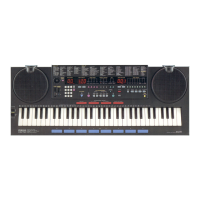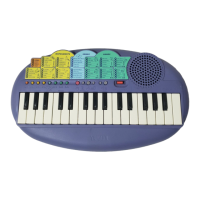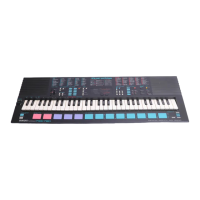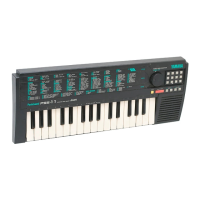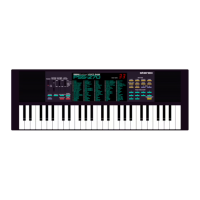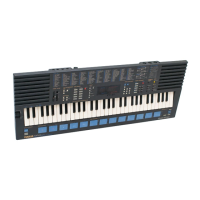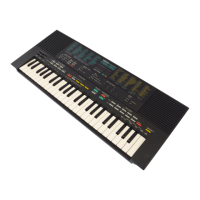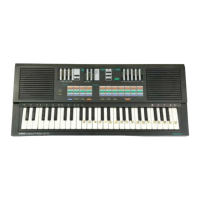
Do you have a question about the Yamaha PortaSound PSS-795 and is the answer not in the manual?
| Number of Keys | 61 |
|---|---|
| Polyphony | 32 |
| Voices | 100 |
| Display | LCD |
| Power Supply | AC adapter or batteries |
| Accompaniment Styles | 100 |
| Type | Portable Keyboard |
| Effects | Reverb |
| MIDI | In/Out |
Important notices regarding modification, cable usage, and FCC compliance.
Instructions on setting up the power supply using batteries or an AC adapter.
Overview of sound setup, voice selection, and display functions.
Selecting, starting, stopping, and controlling tempo for rhythm styles.
Explains the Song Memory function for multi-track recording and playback.
Description of power, volume, displays, and selection buttons.
Details on Voice Effect buttons, Harmony, Pitch Bend, and Vector Synthesizer controls.
Controls for overall settings and MIDI communication.
Buttons for Auto Accompaniment, Rhythm, and Song Memory functions.
How to select preset voices and adjust the instrument's tuning.
Changing musical key and overview of voice effects.
Using the Joy Stick to mix 4 voices for custom sounds.
Selecting and assigning patterns (Normal/Bridge) for rhythm styles.
Managing rhythm playback and adjusting tempo.
An overview of the fundamental steps involved in using Auto Accompaniment.
Step-by-step guide for performing basic recording and recording a full song.
Explanation of MIDI and its connection terminals and cables.
A guide to identifying and resolving common operational problems with the PSS-795.
Explanation of various warning messages like Battery Change, Channel Full, Buffer Full, Check Sum Error, and Memory Full.
A comprehensive chart detailing how MIDI functions are transmitted and recognized.
